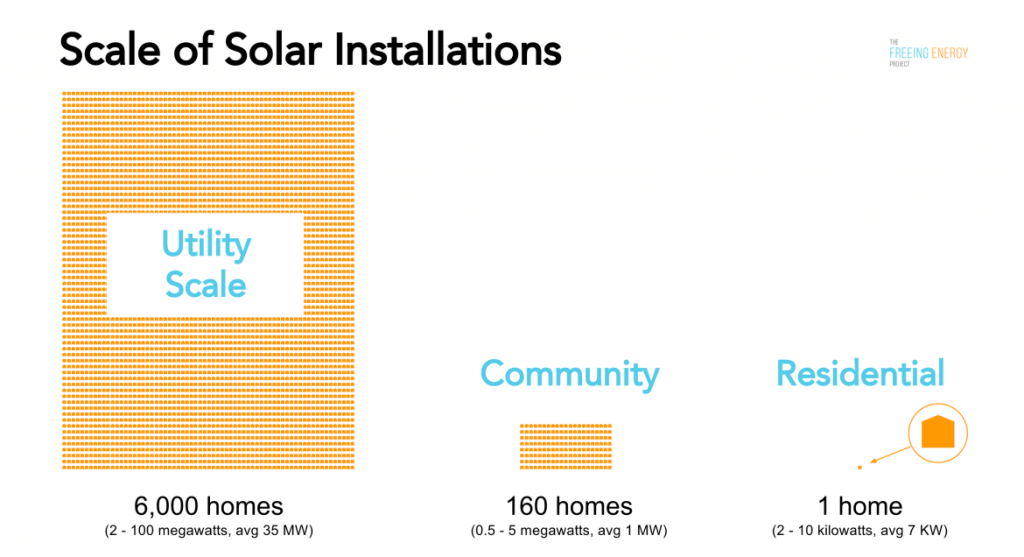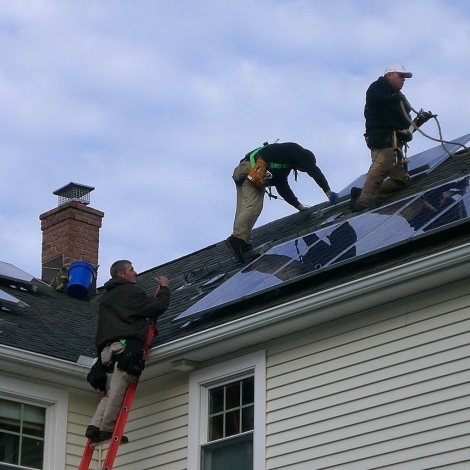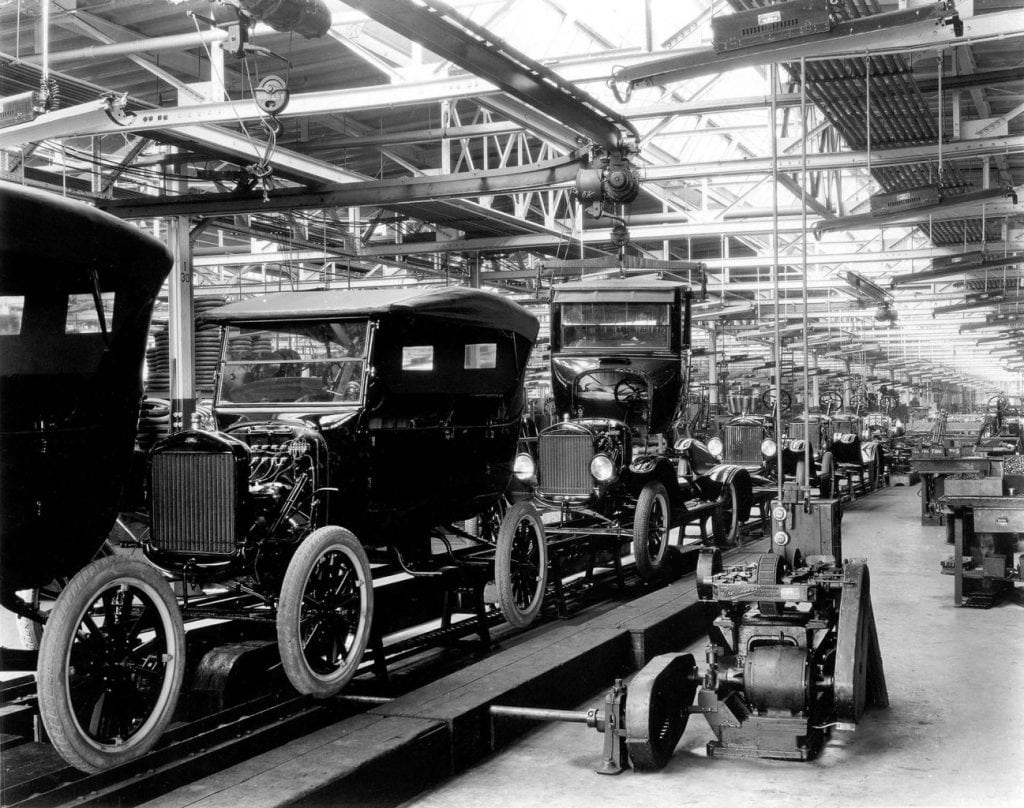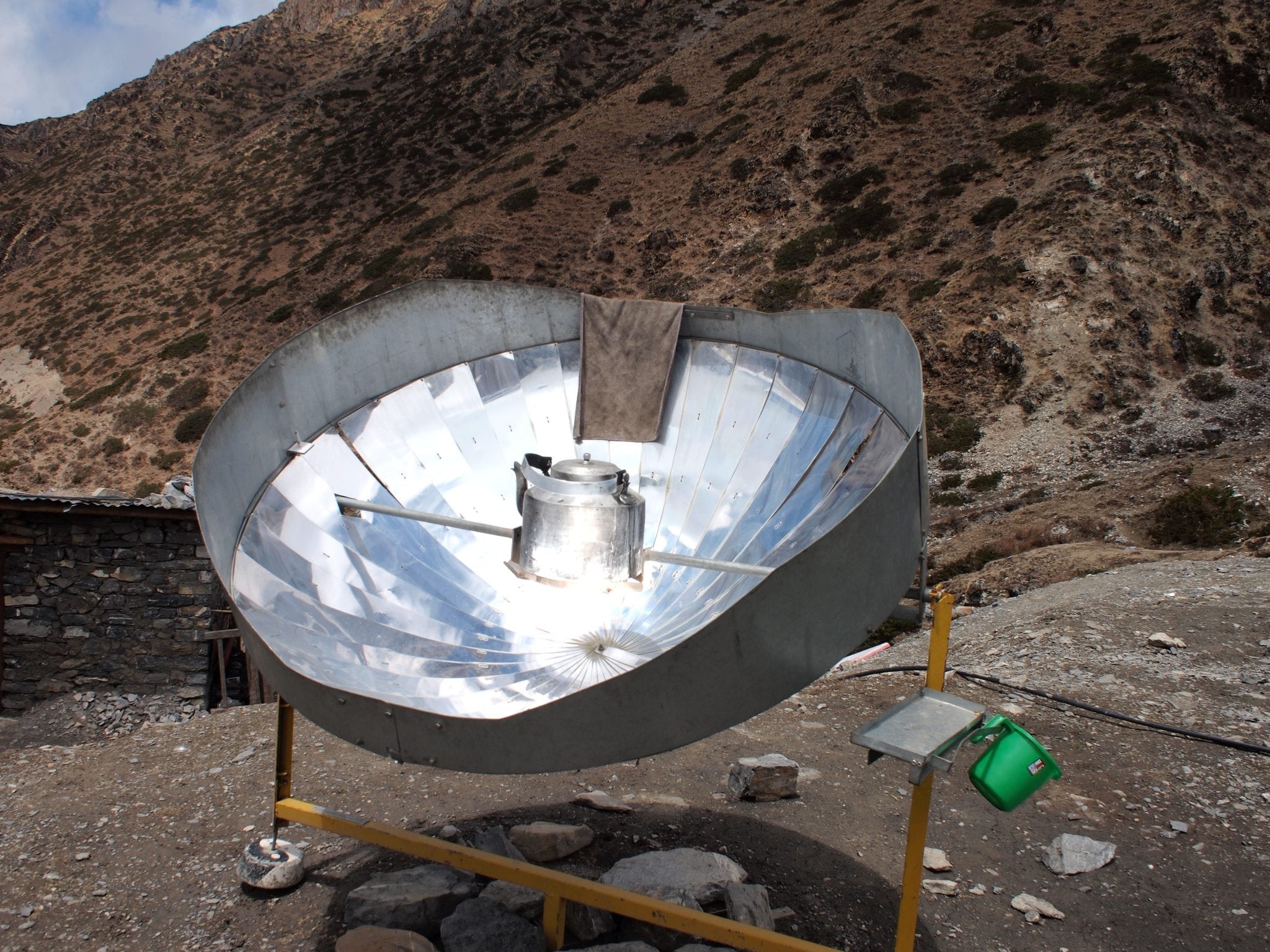Every single solar project, big or small, gets assembled one at a time on a roof or in a field. But what if you could pre-manufacture solar projects in a factory, instead? Could you do to solar what Henry Ford did to cars and make solar even more affordable and available to virtually everyone?
What is “community scale” and why does it matter?
The industry defines solar installations in three rough categories: utility, mid-scale and residential. The mid-scale tier is one of the newest and most exciting areas in solar. It goes by many names including “commercial scale” and what the energy think-tank Rocky Mountain Institute (RMI) calls “community scale.” While the actual numbers vary by location, home size and whoever is doing the calculations, the diagram below shows the broad difference between the categories.

Community-scale is small enough that it can be built near the people that use it but it’s large enough that economies of scale make it cost effective. Community-scale is one of the highest potential growth areas in clean energy because it offers several benefits nothing else can match:
- Widest set of custo
mers – utility-scale solar has only two kinds of customer – large utilities and giant businesses like Google and Apple. Community-scale fits the needs of a surprisingly wide group of customers including campuses, office buildings, shopping malls, neighborhoods, military installations, islands, shared solar farms for homes without rooftop access, and small, rural utilities (called cooperatives or EMC’s). - Easily available land – community solar farms can sit on 5-10 acres of land. Plots this size are widely available, even in suburban areas. By contrast, utility-scale can require hundreds of acres. Plots of land this large are almost always far from population centers and require power lines to deliver the power where it’s needed. High voltage power lines are very expensive and are also the source of the vast majority of blackouts.
The third and most important benefit of community-scale solar is its potential to be repeatable, scalable and modular… to be assembled like Lego bricks.
Community-scale solar can be the Model T of clean energy
Henry Ford famously said that Model T car buyers could have any color they wanted as long as it was black. This approach of one size fits all is just as revolutionary in the solar industry today as it was back in 1908 when the Model T came to market.
How is it that common cars like Toyota’s Camry or Honda’s Accord cost $30,000 to $40,000 but hyper-cars like Lamborghinis can cost millions? Specialized parts account for some of the higher prices but a lot of the difference is mass production. Hand-assembling each hyper-car one at a time is incredibly expensive.
Modern solar installations have more in common with Lamborghinis than Camrys.
- Every residential solar buyer has a unique roof, unique financial needs, and unique house wiring. Residential installers may be able to use commodity solar panels but everything else is one-off.
- Every utility-scale solar has unique terrain, complex financing and a particular place it plugs into the grid. Because the scale is so large, it’s worth hiring experts to squeeze every penny from every element of the project. Money is saved but, other than solar panels and inverters, nearly every other aspect of these large projects is a one-off.
Most modern community-scale projects are treated like small versions of utility-scale projects. Each bidding process, supply chain, engineering design, site delivery and assembly are completely unique. But they don’t have to be.
This is not just a fanciful idea. Some of the smartest people in energy are starting to look at solar, and community solar in particular, in an entirely new way… and it might just revolutionize the industry. Check out my blog on a remarkable gathering that took place in November just outside New York City to explore this very opportunity: Can we make solar installations 3-times cheaper in the next 3-4 years?
Bill Nussey is Founder and CEO of The Freeing Energy Project. He is the former VP Strategy for IBM, a three-time CEO, a self-described recovering venture capitalist, a TED addict, a geek, and a closet scientist.
This article was first posted at The Freeing Energy Project.




i want to study more about solar energy .
hi, I think when we r focusing on mid-range solar power production we need to educate people about these systems more and govt also encourage people to use more solar panels for generating green energy. thanks for sharing this blog with us
i want also more information about solar energy .and also want to work and study in solar energy…
Need more information, you jest gave the idea. But not the pathway to achieve what you proposed. Also it sounds impractical without any justified ways mentioned in the content which may say that it can be actually implemented.
I want to use more cheaper solar energy in our developing country, Myanmar and we want technology.
I am in a country where we have rivers with strong flow to generate electricity, however we are in a crisis never seen by neglect and neglect, so I want to study more about solar energy to contribute in my country venezuela.
We want more about solar energy as well as maintenance of battery which cost a lot for urban in developing countries.